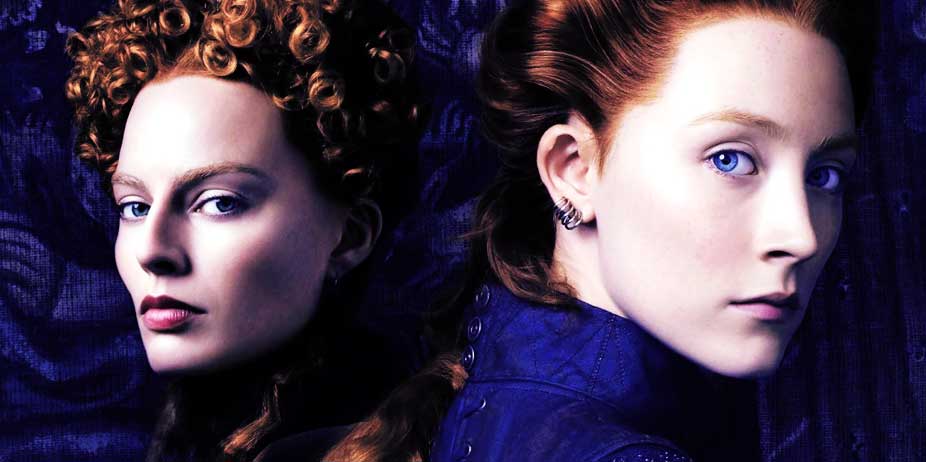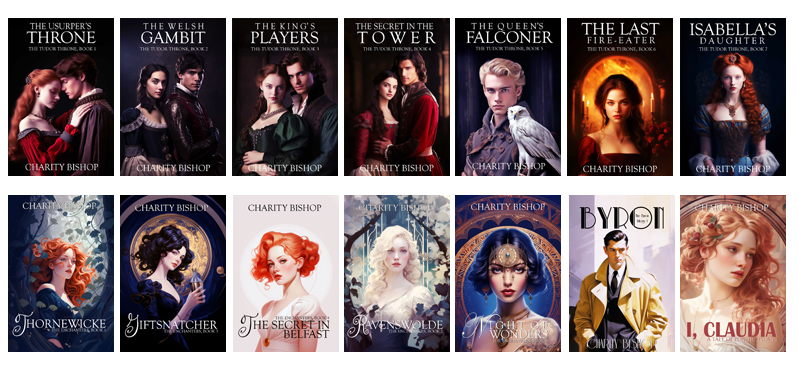 Mary
Queen of Scots (2018)
Mary
Queen of Scots (2018)
History can be a difficult thing to
translate to the screen. It has much more nuance, drama,
and complexity than most two-hour epics can stand. This
recent drama brings the life of the famous Scottish
queen in a forgettable manner.
Mary Stuart (Saoirse Ronan) has landed on Scottish
shores after years spent married to the French dauphin.
After his death, she returns to claim her ancestral
throne, much to the consternation of her cousin,
Elizabeth (Margot Robbie). The single monarch sits on an
uncertain throne, in a nation divided between its
Reformist (Protestant) views, installed by her father,
the notorious Henry VIII, and its Catholic roots. Her
advisors warn her that the Catholic Queen Mary may
threaten her throne’s security and urge her to make war.
But her cousin reaches out to reassure her she has no
such intentions… and casts about for a politically
advantageous way to seal an alliance with England. Since
her marriage could make or break Elizabeth’s reign,
against her better wishes, the queen sends her favorite,
Robert Dudley (Joe Alwyn), to Scotland to woo her
cousin. But Mary spurns him as “the queen’s castoffs.”
She sets her eye on a mightier prize, the adventurous,
romantic, and pleasure-giving Lord Darnley (Jack
Lowden). But even as Mary struggles to maintain order in
her new kingdom, a resentful cleric named John Knox
(David Tennant) preaches against her “Papist” ways from
the pulpit. Mary’s choices will lead her down a dark
road, and force Elizabeth into a terrible decision.
As an amateur historian of the Tudors, this film’s
inaccuracies stood out to me at once. I can overlook the
denim fabric (not invented for awhile and never worn by
royalty), but not the modernization of the characters’
attitudes and behaviors. Mary Stuart was a Catholic
queen, steeped in her religious ideology, with firm
views on heaven and hell. This tolerant woman who
reassures her soldiers “we will all go to the same
heaven,” who clasps a homosexual’s face between her
hands as he wears a dress in her chambers and gently
tells him to “be true to himself,” and who forgives that
same person when she finds him naked in bed with her
husband… is not a period-accurate Mary. Nor would the
real Mary have welcomed Darnley into her bed for oral
sex before the wedding – putting aside her Catholic
inhibitions, she had a little thing like “reputation” to
worry about, in a period when her enemies could use any
reason to depose her.
The film is also inaccurate in its depiction of
Elizabeth, who comes across as flawed and weak. History
shows us she was a skeptical, fearful, and cunning
manipulator of events, always several steps ahead of her
advisors. And while the series does allow her to shine
in certain scenes (aided tremendously by a wonderful
performance), it takes pains to exaggerate her
pockmarked face and jealousy over Mary’s pregnancy. The
real Elizabeth would never have bared her shame to her
cousin, any more than they would have ever met in secret
(although I do not mind that, it’s the most powerful
scene). It gets many of the details and circumstances of
events right; the murder of one of Mary’s closest
friends is harrowing to watch, as is her “forced
marriage” by her rapist, but overall it left me feeling
underwhelmed.
In an attempt to be modern, the film cuts back and forth
between its two heroines almost constantly. This can be
dizzying. It leaves Elizabeth with short, disconnected
scenes and very little character development. Events
also move quickly in Mary’s life, and she comes across
as an abrasive opportunist. The music, when it’s there,
is memorable – but long periods of time are noticeably
silent. The costuming is semi-accurate, the cast is
wonderful, but the sex scenes make it feel tawdry, the
modern views come across as preachy, and I walked out
feeling I would have liked the movie to be about
Elizabeth instead… never a good thing when she has about
twelve minutes of screen time.
Sexual Content:
Extreme. A man and woman grope in a corridor, he tries
to lift her skirt and she reminds him he has a wife; a man enters a woman's
chamber, kisses her, and pleasures her orally in a very long scene that focuses
on her orgasmic expressions; a woman finds her new husband in bed with a naked
man (partial nudity, behind nudity); a man runs around in a dress and says he
feels like a woman (a woman affirms him and tells him to be true to himself); a
woman climbs onto her drunken husband, stimulates him with her hand, and tells
him to get her pregnant; she becomes too aggressive, and he slaps her, so she
beats on his chest; he throws her onto the bed and has sex with her from behind
(partial nudity); an unmarried couple is often alone / kissing in her
bedchamber; a man threatens a woman with rape -- she consents, but we see them
having sex (partial nudity on his part).
Language:
References to queens being "whores" and the term
"bastard."
Violence:
Scenes of warfare and brutality; women are slapped and
shoved around; in a long, graphic scene, a pregnant woman tries to protect a man
from being assassinated -- a man points a knife at her belly and forces her to
step aside; they brutally stab him to death until he lies in a bloody pulp (she
watches all of this in horror).
Other:
Historical inaccuracies. Modern values and beliefs imposed
on the past.
